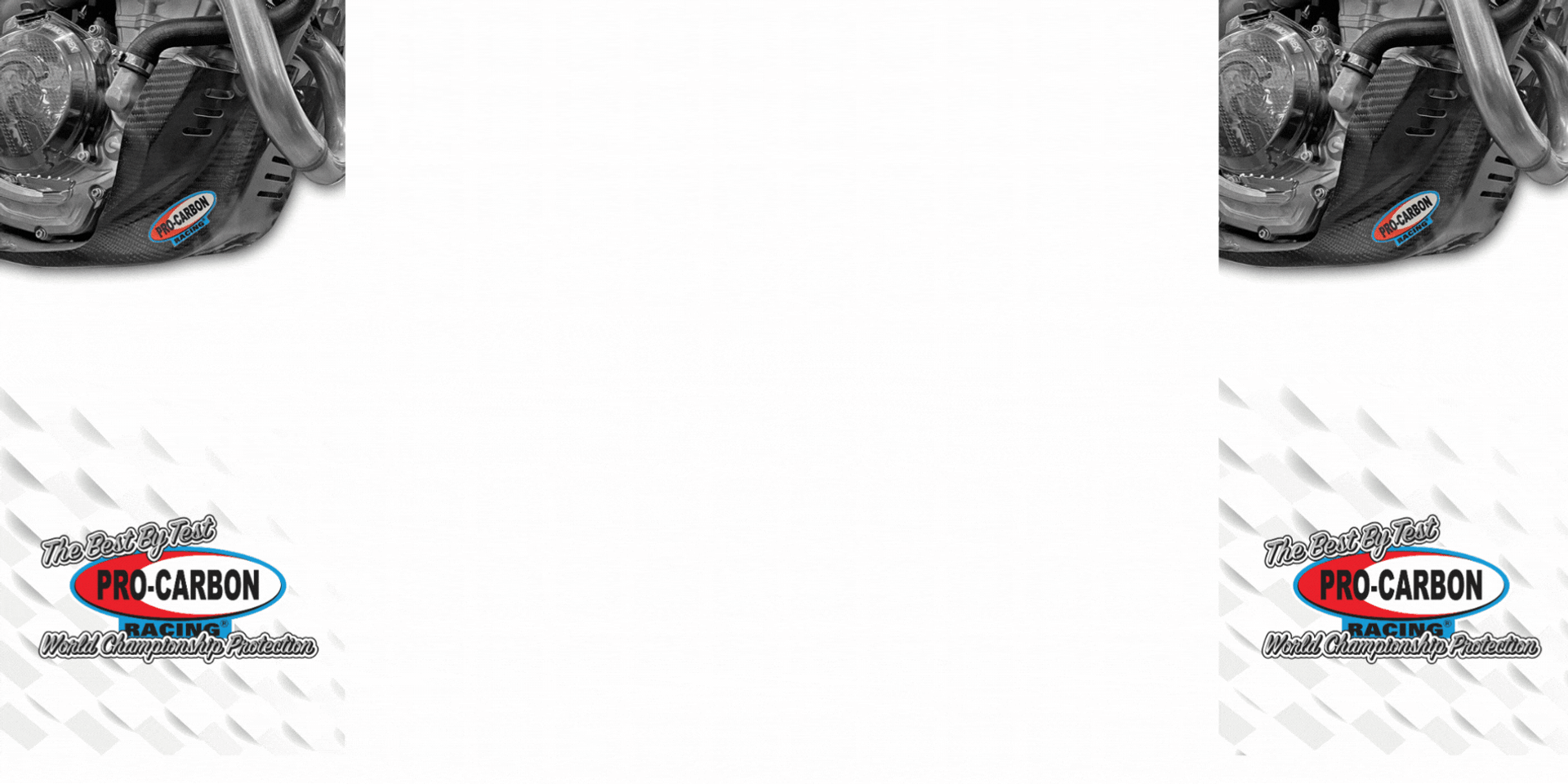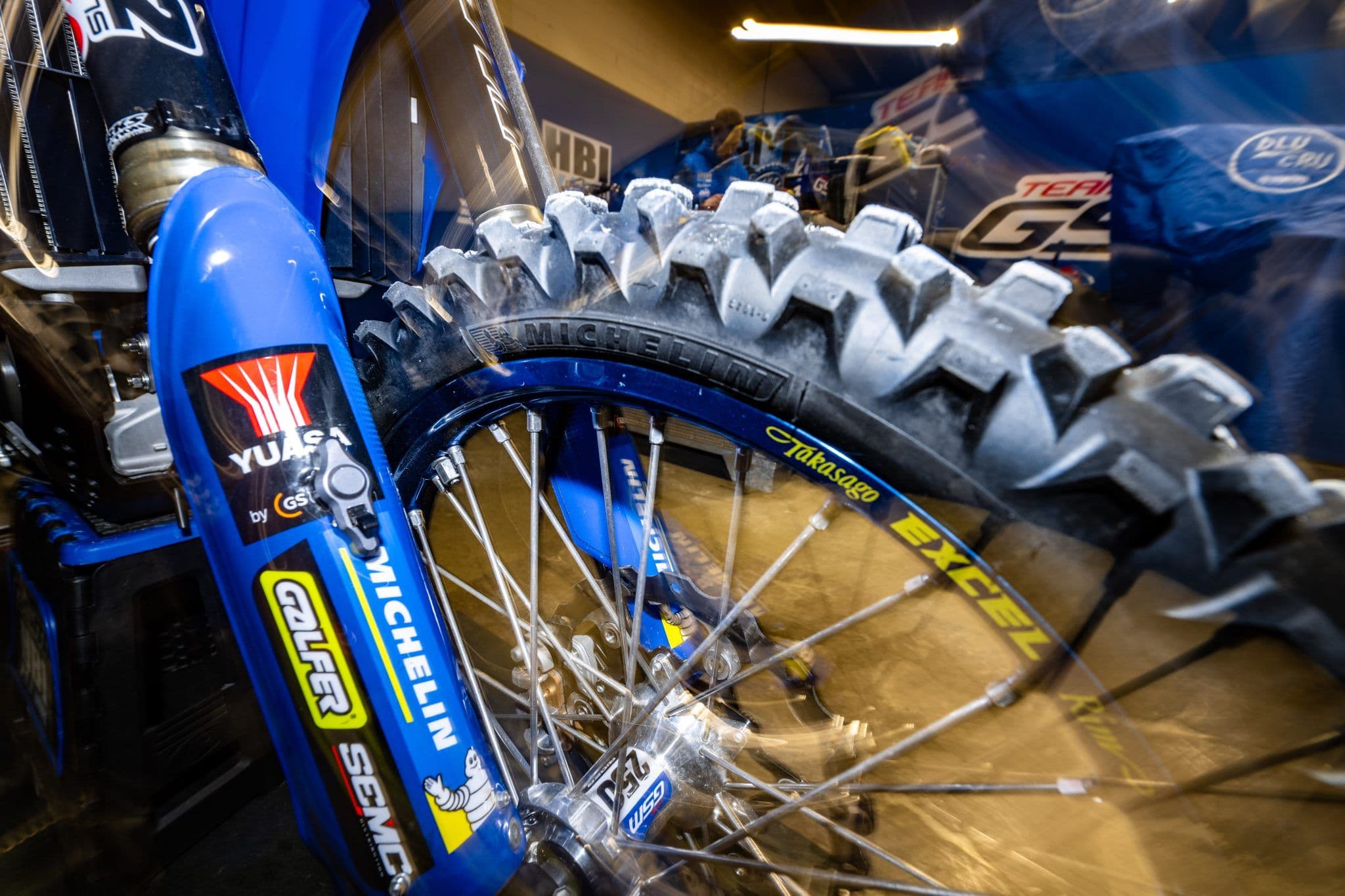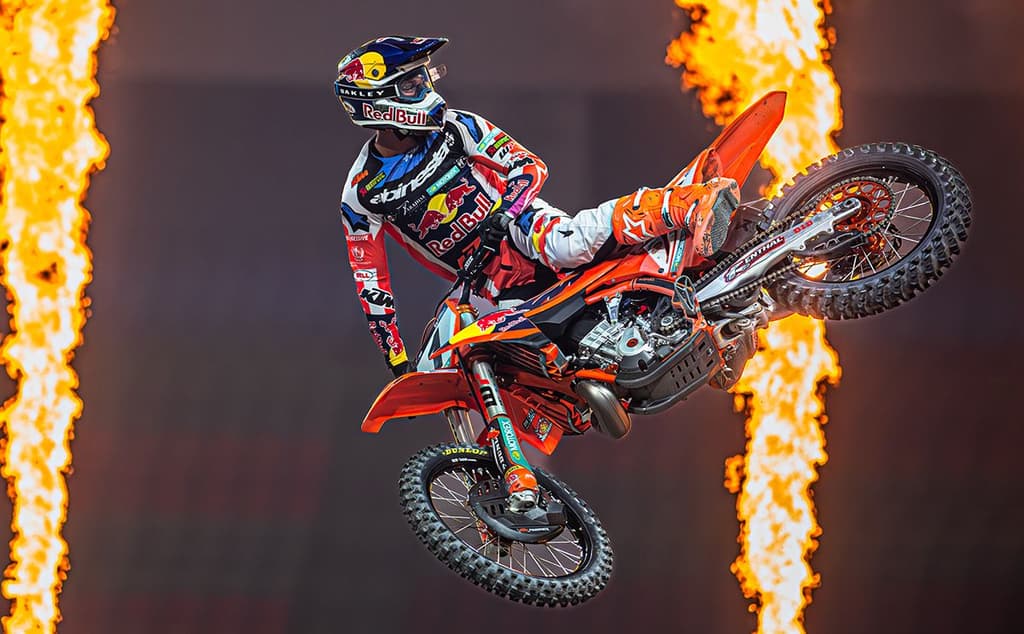WSX - Tyre Choice
Tyres are the basis for grip, speed and performance in asphalt-based motorsports but is race rubber just as crucial in supercross? Adam Wheeler from WSX gives us an inside look on what to pick when it comes to tyres.
The right tyre choice and the right set-up for race-long adhesion is a fundamental part of motorsport, even in single-make championships like F1 and MotoGP. For dirtbike competition, and supercross specifically, the selection of rubber is less critical…or is it?
Some of the best and most advanced tyre brands can be found on the wheels of World Supercross racers. Companies like Michelin not only have over 130 years of history and expertise but are also at the forefront of technology when it comes to the composition of tyres, their performance and their environmental implications (recycled material and pushes to sustainability).
Michelin have a vast spectrum for four wheels, two wheels, pedal power, aviation and more but they also engineer a sterling off-road product with their StarCross MX tyre that contains all the R&D necessary to maximise traction on diverse terrain.
Tred matters
A supercross tyre is largely the same as a normal motocross model. The riders will have different compound choices. In Michelin’s case the Starcross comes in Hard, Medium, Medium-Hard, Medium-Soft and Soft with a Sand and a Mud version also. Perhaps the most visual difference for fans is the layout of the tread. The pattern of the knobs or ‘studs’ in the centre, the intermediate and the lateral parts of the tyre effect the way it distributes soil and harnesses grip.
The integrity of the stud is paramount for a durable carcass that the rider can depend on; it’s better for the stud to wear down rather than subside. Michelin use a tough silica to help with resistance. Fans might also hear riders talk of “scoop” tyres. This refers to the sand tread profile, where the stud has more of a concave or ‘scoop’ shape to plough more effectively though looser earth.
Which compound?
Tyres are tough, whatever the compound. An elite supercross racer can get through an entire World Supercross GP round with just one set. Manufacturers will normally have a ‘race service’ at events where riders can consider their options.
“It depends on the level of race support that you or your team might have but there is normally some choice,” says SX2 title contender Max Anstie. “There might be five-six different front tyres or three-four different rears. 120s-110s dimensions for the front, some slightly skinnier, some slightly fatter. Different compounds for the rears and there might be ‘factory’ or ‘stock’ tyres: stock or ‘standard’ tend to be a bit stiffer. You can run a bit less pressure and some riders like that. The factory tyres are a bit lighter, a softer compound, but they can roll more. It’s a ‘feel’ thing.”
Picking what’s right for the rider
Even though they have a ‘menu’, supercross racers tend to err on the side of caution for tyre choice, unless the weather dictates otherwise. Anstie claims that there is a variation in performance between brands and, for him, his need to ‘feel’ is the determining factor.
“I stick to the tyre that I know because of that predictability. It might be a tyre that, on paper, should not be as good for, say, hardpack tracks but you know when it will push. You are better-off knowing the feel it gives you rather than trying something unfamiliar (which might be better), taking more laps to know it and the tyre is different in certain areas. We’re sensitive!
“I’ve tested a lot with tyres – and there is a lot of choice – but I found what I like for my set-up preferences through the whoops and I stick with that, whether the track is soft or hardpack. In extreme cases, like sandy stuff, then we’ll switch to a scoop.”
Other factors to consider
Racers also must select a tyre that provides enough grip at the start. “The metal grates have become an issue,” the Brit says in reference to the gate. “If you have an older tyre, it can spin more. A new one feels like it gives more traction. So, this is something to bear in mind if it’s wet and slippery and the older tyre has some mud.”
Another part of the track that comes under scrutiny is the whoops. Again, riders need traction and stability and it’s where Anstie’s sensitivity appears again.
“I like to stick with a mid-soft choice, mainly for the whoops. I don’t want to use a full hardpack tyre – even if it is hardpack – because it feels different in that section. A harder compound reacts differently, and we know that whoops are a big thing in supercross. It can be more deflective which makes the whoops worse to tackle.
“I like a thinner front tyre but it’s a preference,” he continues. “Most supercross tracks are a bit soft and have ruts and it gets through those better and is more stable in rhythm sections and whoops.”
Feeling the pressure
Choice, preservation and sensitivity…but there are other aspects of tyre prep. “Pressures are important,” Anstie reveals. “If the track is sticky then you can use more pressure and it helps to make the ground less ‘grabby’. If it’s really hardpack then you can go a bit lower but there is a lot of force going through the tyres and the rest of the bike, so you have to take care.”
What about internals? Motocross tyres can use solid ‘mousse’ inners compared to traditional tubes to combat potential punctures.
“We run tubes, front and rear, whereas for motocross it will be mousses,” Anstie says. “The reason for tubes is because less weight, and it makes the bike feel less inert.”
Unlike F1 and MotoGP where tyres will get used, discarded and recycled, supercross is less demanding on the hardware. They last pretty well but it does depend on the track. Typically, you can get through a full meeting with just one set but whether it’s a mental thing or a risk-assessment thing then you’ll normally a new one for the race. It might just give that extra bite. It’s all about percentages.








